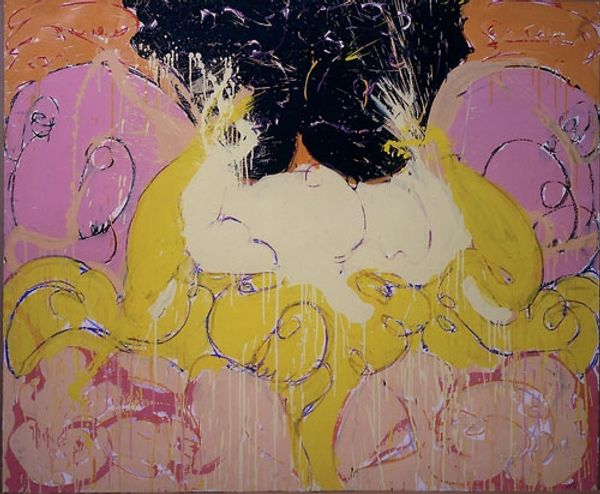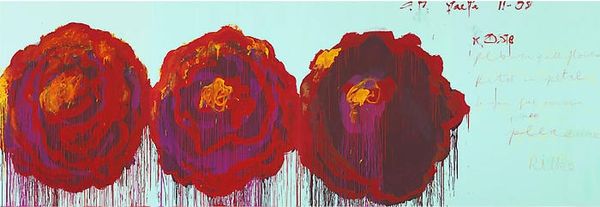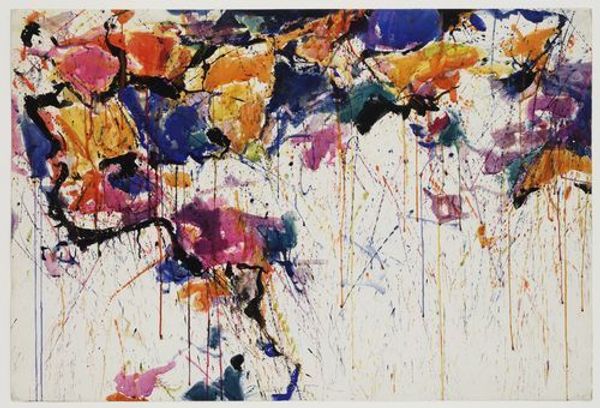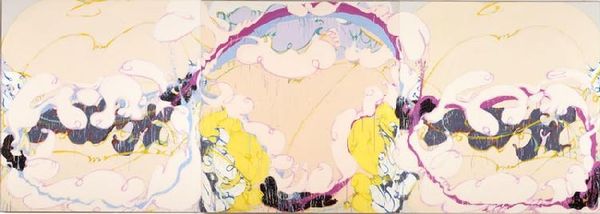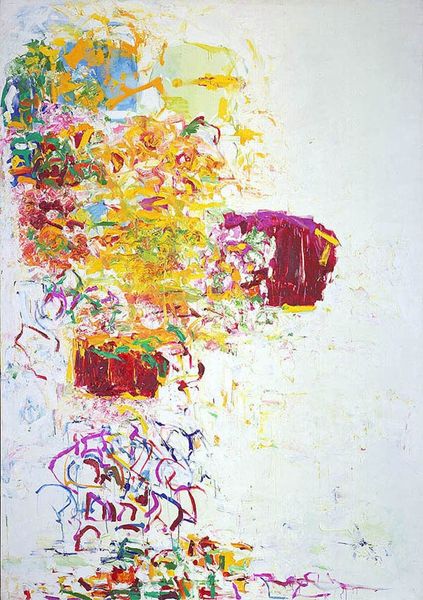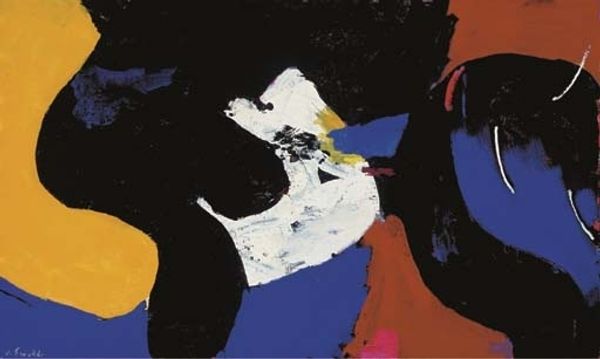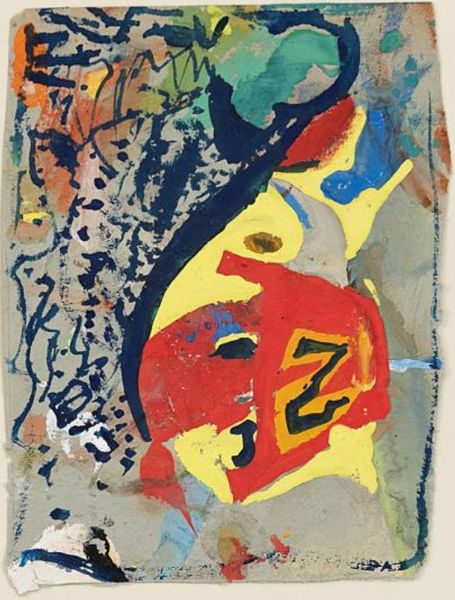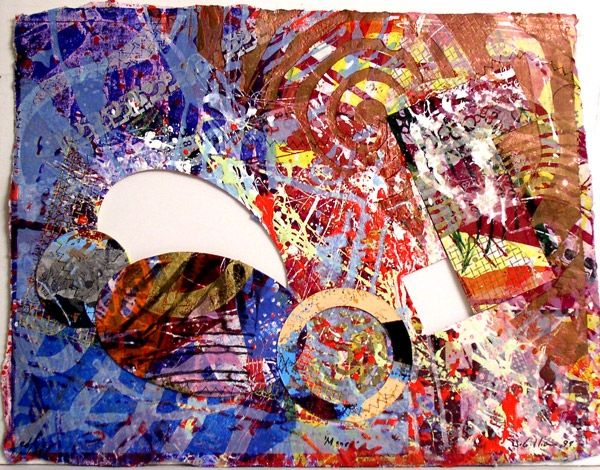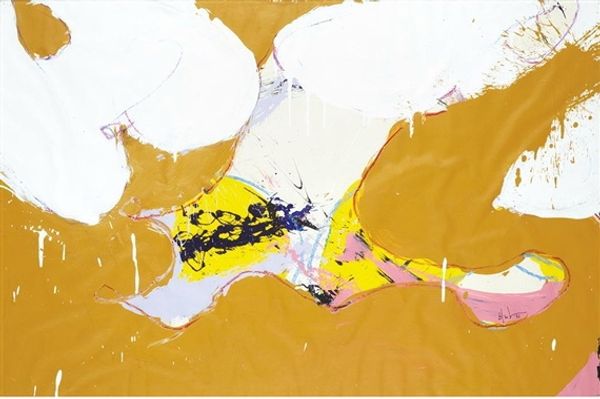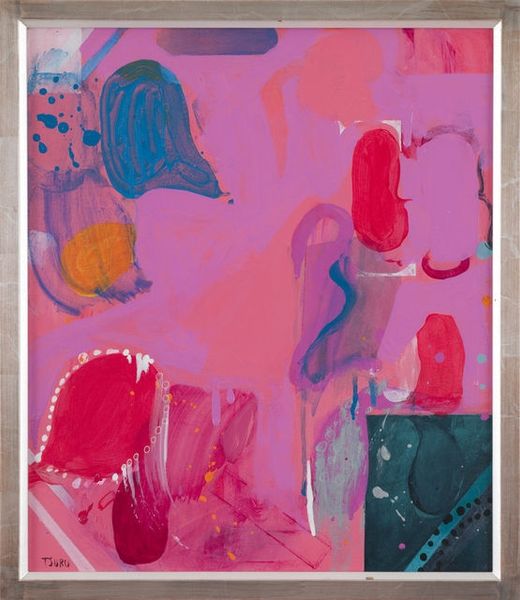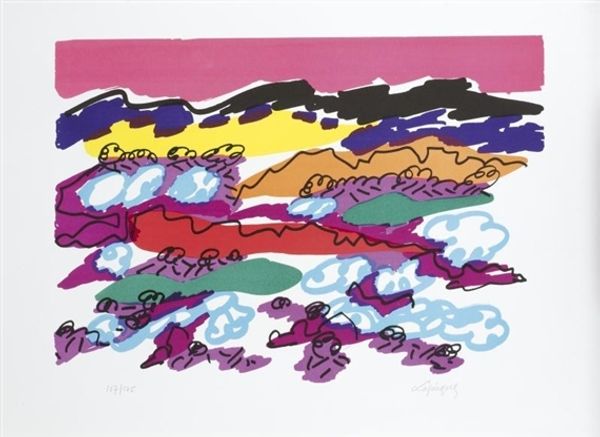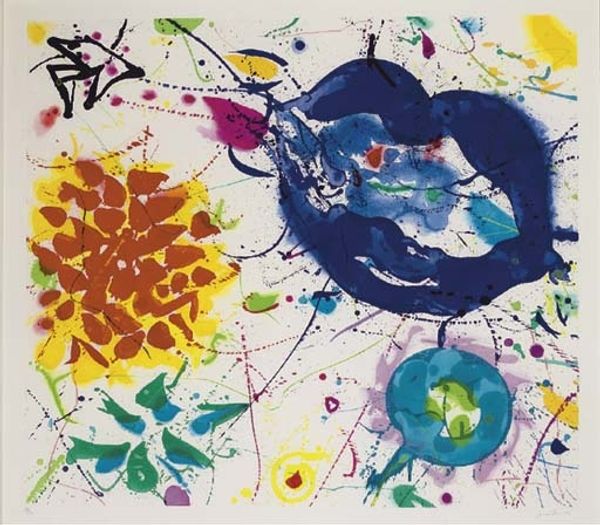
Copyright: Norman Bluhm,Fair Use
Editor: Norman Bluhm’s *Easter Morning*, painted in 1979, is a riot of mixed media, with what looks like acrylic paint dominating the canvas. I’m immediately struck by how visceral it feels; the large scale and the almost aggressive application of paint makes it feel so immediate. What do you see in this piece? Curator: For me, *Easter Morning* is really about the materiality of painting itself. Look at how Bluhm uses acrylic to build up these dense, almost fleshy forms. Consider the labor involved, the physical act of applying layer upon layer. He’s challenging the idea of painting as simply representation. It becomes an object, a record of its own making. What do you think the scale contributes? Editor: I think the size intensifies that feeling, it feels like a real physical presence. Are you suggesting the "Easter Morning" title might even be ironic, contrasting such violent painting with a celebration of rebirth? Curator: Perhaps. It forces us to think about the consumption of art too. Acrylic paint became increasingly available and cheap, enabling larger works. But this also democratizes artistic practice, opening avenues to new types of artists and studios, outside of traditional craft boundaries. This is, perhaps, rebirth of artistic materials! What implications could this hold for art world hierarchy? Editor: It's interesting to think of abstract expressionism in terms of material availability. I usually consider it a product of individual genius, rather than affordable paint. Curator: Exactly! By thinking about materiality and modes of production, it really opens new dialogues and interpretations. This moves away from the idea that it’s the artwork from a singular creative mind. Editor: That’s a completely new way of approaching abstract art for me. Seeing the creation and the means as fundamental, instead of the artist’s emotion. Thanks! Curator: Indeed. The point isn't to replace the artistic agency, but rather it can change our thinking about how to connect process, objecthood, and ultimately the artistic value ascribed to those efforts.
Comments
No comments
Be the first to comment and join the conversation on the ultimate creative platform.
